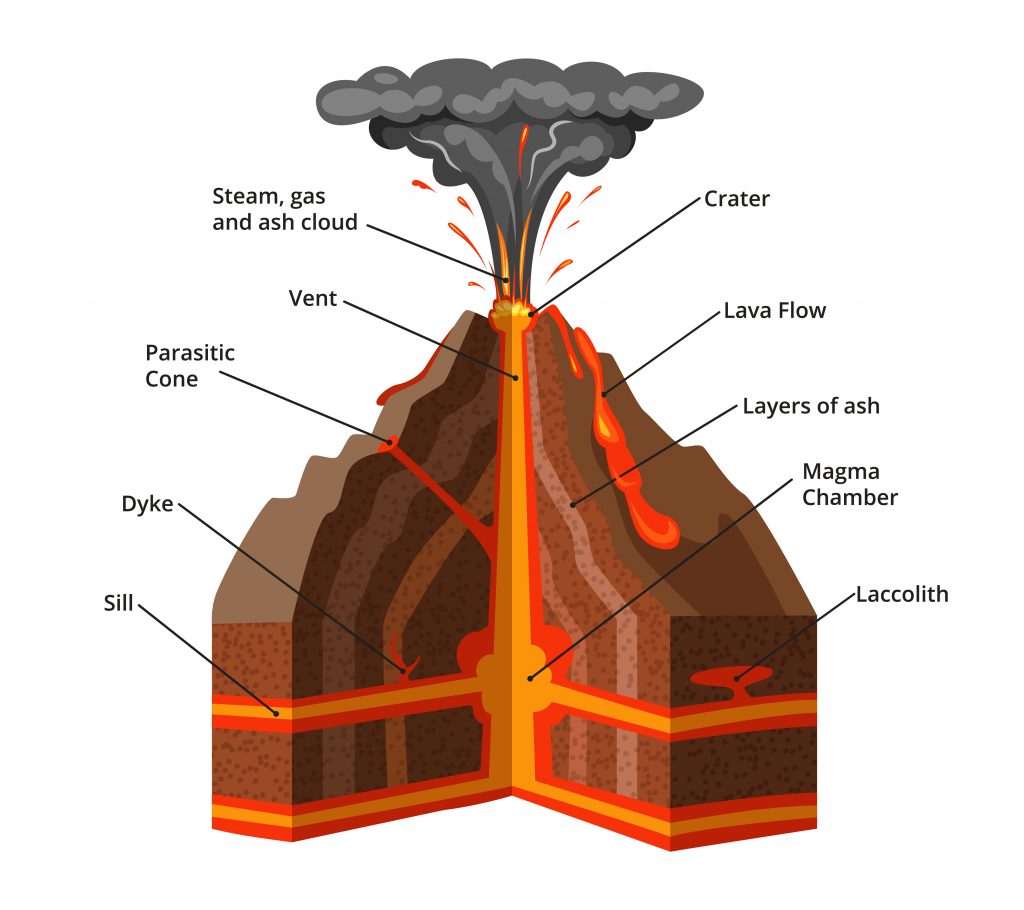Volcanoes are formed when there is a great stress inside the earth’s crust and the pressure of magma reaches so high that it finds its way upward causing an eruption. Sometimes the magma chamber breaks its sides and only reaches to the flank or summit of volcano and sometimes reaches to the surface causing an eruption. In the volcanoes which are not much active supply the magma from the deeper parts of the earth is not sufficient to cause eruption so most of the times crystals forms and they go down at the bottom releasing gas in the form of bubbles which come to the top of chamber and sometimes the pressure created by these gas bubbles are enough to erupt a volcano or just wait there for a little more push which they get from the next new magma formed within the earth. The heat just triggers the magma for eruption which was there for a long time.
Magma is the melted rocks deep in the earth crust. The rocks melt because of great heat inside and forms a thick liquid called magma and when it comes to the surface it is called as “lava†and flows into the air in the form of ashes etc.
If the volcanic eruption is explosive then the matter forms a cloud of hot tephron. The things coming in its way are almost destroyed. Ashes which are released in the sky fell on the earth in the form of powdery snow and it doesn’t melts. A huge mass of snow can cause harm to the vegetation, living organism and human beings.
The intensity of explosion depends upon the thickness of magma. The gases cannot escape easily. Hence they are accumulates inside till they get enough heat energy for the explosion.
More Entries
- How do earthquake form?
- Why is earth round?
- How deep is the Pacific Ocean?
- How was the earth formed?
- How do fossils get inside the rocks?
- What causes an ocean trench?
- How old is earth?
- How are valleys formed?
